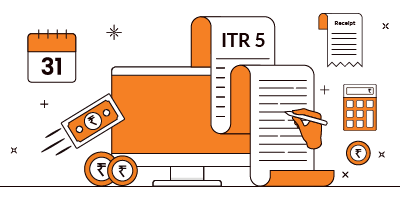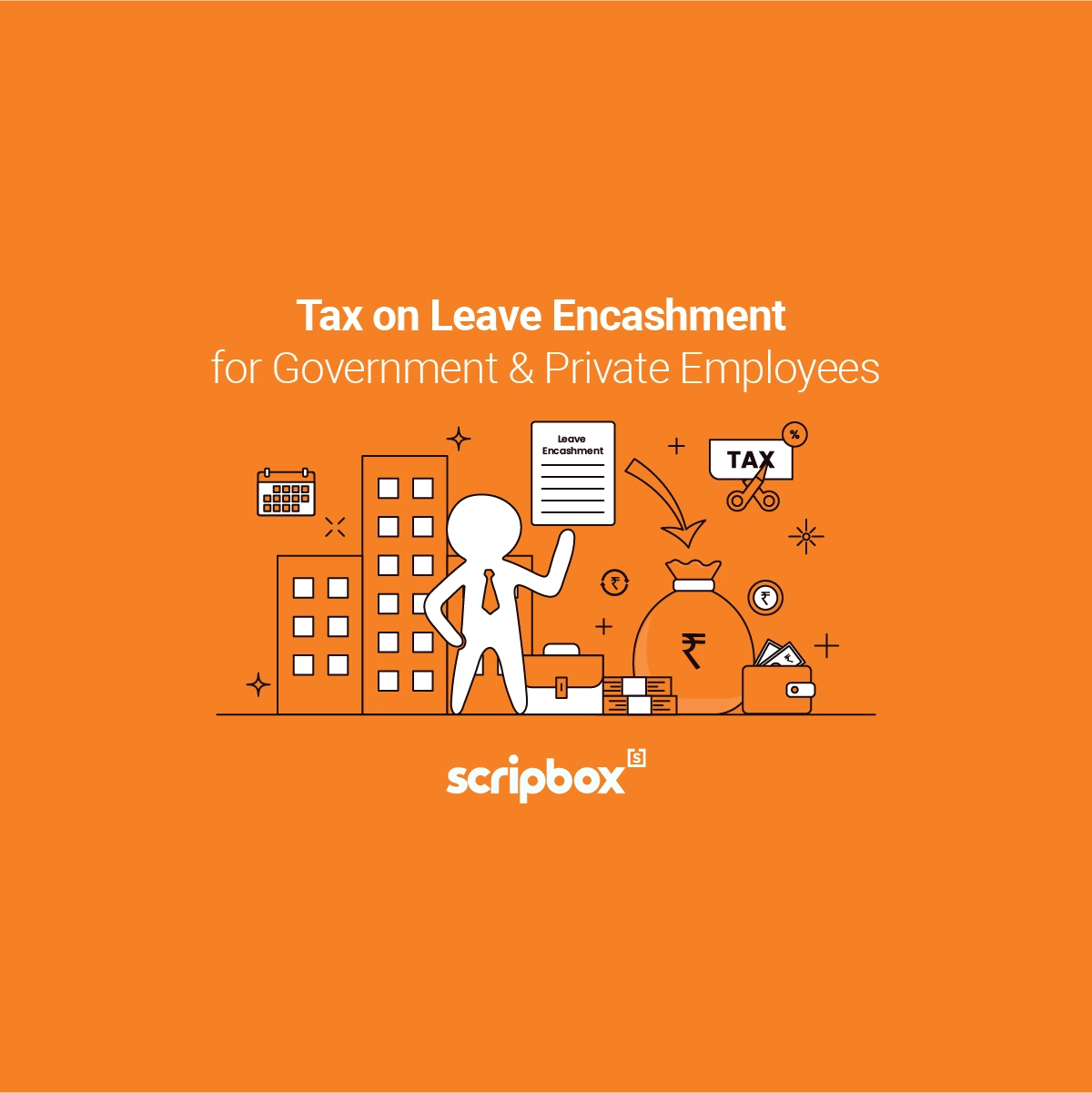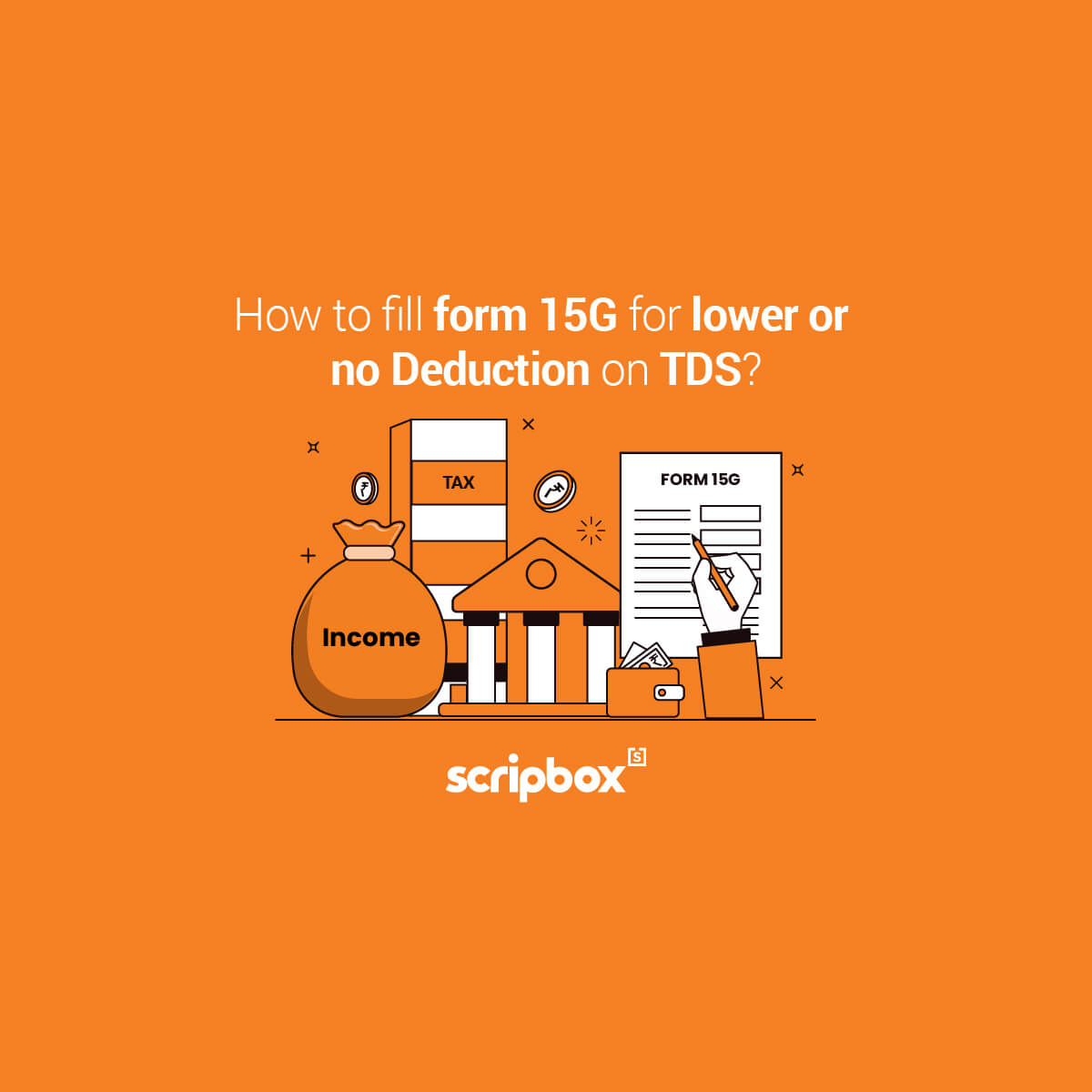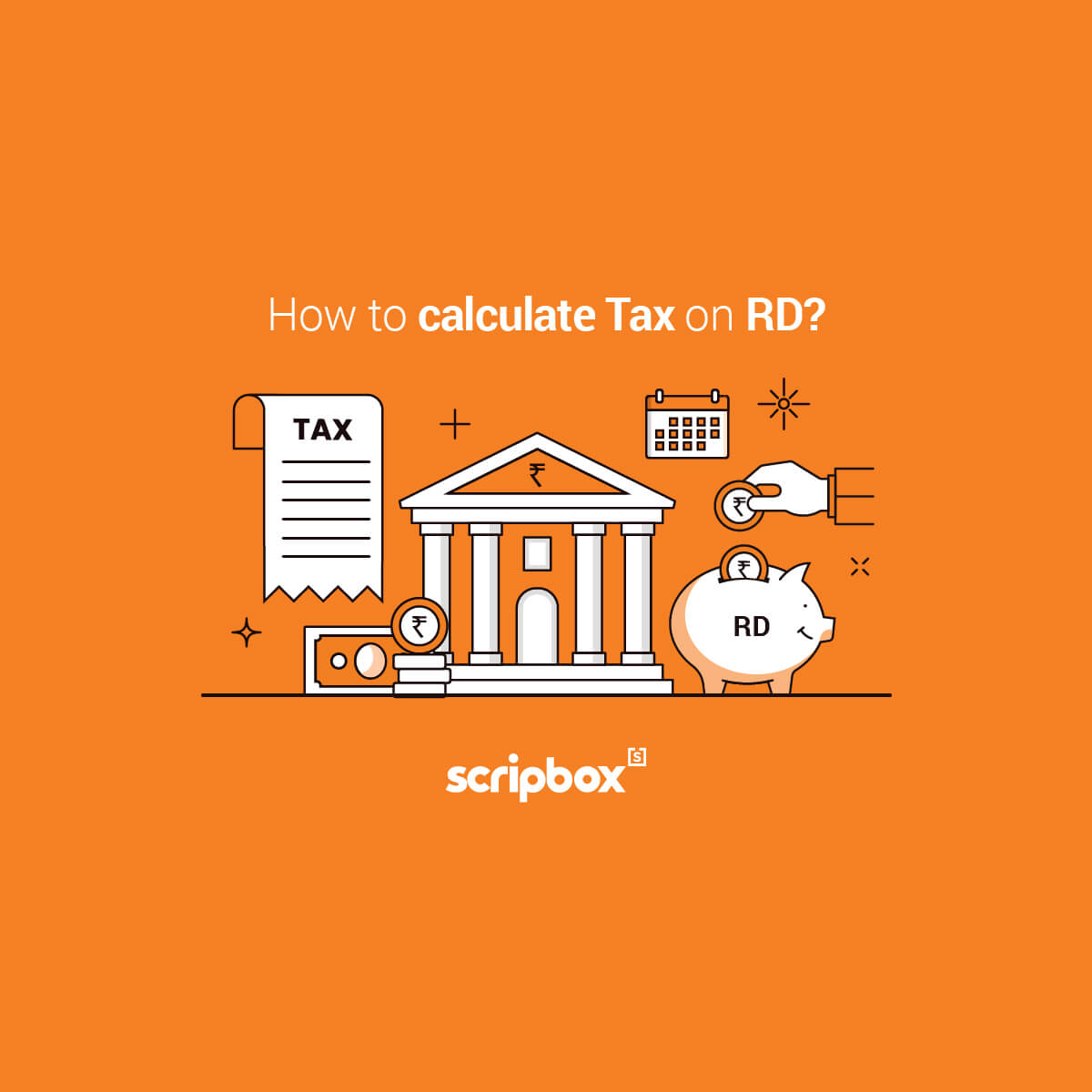The Income Tax Department has launched its new e-filing website on the 7th of June, 2021. This new portal will soon replace the existing portal www.incometaxindiaefiling.gov.in. With the main focus on a user-friendly e-filing experience for the taxpayers, the new portal ensures a quick and seamless ITR filing process. Currently, ITR-1 and ITR-4 (online and offline), and ITR-2 (offline) are available on the new portal. Other ITRs such as ITR-3, ITR-6, ITR-5, and ITR-7 will also be available. For the month of June 2021, the new ITR filing software will be free of cost for taxpayers. ITR will be immediately processed leading to a quick income tax refund. A single dashboard will represent all the tax-related interactions.
Who can file ITR 5 Form?
ITR 5 form is applicable to all taxpayers running a business or profession excluding an individual taxpayer and a HUF. ITR 5 form includes income under all the 5 heads of income along with a statement of manufacturing and trading account, profit and loss account, and balance sheet. In this article, we have explained the applicability of ITR 5, how to file it, and the structure of this income tax return.
ITR 5 is applicable to the following categories of taxpayers;
- a firm including Limited Liability Partnership (LLP)
- Association of Persons (AOP), Body of Individuals (BOI), Artificial Juridical Person (AJP) referred to in clause (vii) of section 2(31),
- The local authority referred to in clause (vi) of section 2(31),
- representative assessee referred to in section 160(1)(iii) or (iv),
- cooperative society, a society registered under Societies Registration Act, 1860 or under any other law of any State,
- trust other than trusts eligible to file Form ITR-7,
- estate of a deceased person, the estate of an insolvent,
- business trust referred to in section 139(4E)
- investments fund referred to in section 139(4F).
The taxpayer who is required to furnish an audit report must mandatorily file such audit report electronically on or before the actual date of filing the return of income. An assessee is required to furnish an audit report under sections 10AA, 44AB, 44DA, 50B, 80-IA, 80-IB, 80-IC, 80-ID, 80JJAA, 80LA(1), 80LA(1A) 92E, 115JB or 115JC.
Who cannot file ITR 5?
ITR 5 form is not applicable in the following cases:
- Taxpayers who are individuals, Hindi Undivided Family HUFs, Company registered under the Companies Act, 2013
- Taxpayers who are required to file the return of income under section 139(4A) or 139(4B) or 139(4D) of the Income Tax Act, 1961.
How to file ITR 5?
You can file ITR 5 form electronically online on the e-filing portal of the income tax department. Further, you must file ITR 5 on or before the due date of filing the income tax return. You cannot file this income tax return in the paper form.
On the electronic filing portal, you can either prepare online and submit the ITR or fill the excel/ JAVA utility and then submit the utility.
Read about How to File ITR 2 Form?
Prepare Online and Submit
Under this option you need to follow the following steps:
- Login to your income tax account using your username and password on the income tax department’s website.
- Under dashboard, go to ‘Filing of Income Tax Returns’ and select the option of ‘Prepare and Submit Online’
- Check the prefilled details and fill in the rest of the income tax return. Save every schedule and then continue.
- Submit the ITR and proceed to verification.
Fill an Excel/ JAVA utility and Submit
Under this option, you need to download the utility, fill it and then submit it online. The following steps will help you in filing the ITR under this option:
- Visit the website and download the utility.
- Follow the below steps to download and use the utilities
- Select the Assessment Year for which you are filing the income tax return.
- You can download either an excel or the Java utility.
- The utility will get downloaded in your system ‘download’ folder in a ZIP file and compressed mode.
- You need to extract the zip file containing the utilities. The folder will be extracted in the same location where the compressed utility was downloaded.
- Open the utility and start filling.
- Fill, save and validate each tab of the utility.
- Once you have completed the utility you will have to submit it online.
- Login to your income tax efiling account.
- Click on ‘Dashboard and select the option of ‘Filing of Income Tax Return’.
- Select the assessment year and upload the utility. Lastly, click on submit.
Recommended Read: How to File ITR Online?
How to Verify ITR 5?
You can submit ITR 5 only online through the e-filing portal on the income tax department. Further, you can verify your income tax return by opting for any of the following options:
- Digital signature of the verification form of the income tax return form. The taxpayers whose accounts are required to be audited u/s 44AB must mandatorily verify electronically through digital signature.
- Aadhaar OTP
- Authentication by way of electronic verification code EVC
- Send the duly signed copy of ITR acknowledgment by post to CPC, Bangalore. The Form ITR-V-Income Tax Return Verification Form should reach within 120 days from the date of e-filing the return. The Income Tax Department will send a confirmation of the receipt of ITR-V at the Centralized Processing Centre. The confirmation will be sent registered on e-mail ID registered in the e-filing account of the assessee.
What is the structure of ITR 5? How to fill ITR 5 Form?
The ITR 5 is divided into the following parts and schedules:
Part A-GEN General
Personal information
The information such as name, PAN, address, mobile number, date of commencement, date of formation, and email address.
Filing Status of the Income Tax Return
- Nature of income tax return filing i.e. filed under section 139(1) On or before the due date, 139(4)-After the due date, 139(5)-Revised Return, 92CD-Modified return, 119(2)(b)- after condonation of delay. In the return is revised/Defective/ in response to notice then mention the reference number.
- Residential Status
- Confirm whether the assessee is located in an International Financial Services Centre and derives income solely in convertible foreign exchange
- Confirm Whether you are recognized as a start-up by DPIIT. If yes, then provide the start-up recognition number allotted by the DPIIT.
- In case you have received the certificate from the inter-ministerial board then provide the certification number
- In the case of a non-resident, is there a permanent establishment (PE) in India? Answer as Yes or No.
- Confirm whether you are an FII / FPI? If yes then provide the SEBI registration number.
- In case you are filing ITR 5 as a representative of a taxpayer then provide your name, capacity, address, and PAN being the representative of the assessee.
- If you a partner in a partnership firm then provide the name of such partnership firm and PAN
- In case you have held unlisted equity shares at any time during the previous year the provide the following information:
- Name of company, type of company, PAN
- Opening balance- No. of shares and Cost of acquisition
- Shares acquired during the year- No. of shares, Date of subscription/ purchase. Other details such as Face value per share, Issue price per share (in case of fresh issue), and the Purchase price per share (in case of purchase from existing shareholder)
Audit Information
- Confirm whether you are liable to maintain accounts as per section 44AA.
- Confirm whether you are declaring income only under section 44AD/ 44ADA/ 44AE/ 44B/ 44BB/ 44BBA. If no, then whether during the year total sales/ turnover/ gross receipts of business exceeds Rs.1 crore but does not exceed Rs.5 crores. If yes then confirm whether the aggregate of all payments for expenditure or on capital account, repayment of loans, etc., in cash, does not exceed 5% of total payment. Further, also confirm whether the aggregate of all amounts received i.e. for sales, turnover or gross receipts or on capital account, loans, etc., in cash, does not 5% of total payment.
- Mention whether you are liable for audit under section 44AB. If yes, whether the accounts have been audited by an accountant. If yes then mention the following:
- Date of furnishing of the audit report
- Name of the auditor signing the tax audit report
- Name of the auditor (proprietorship/ firm)
- Proprietorship/firm registration number
- Permanent Account Number (PAN)/ Aadhaar Number of the auditor (proprietorship/ firm)
- Date of audit report
- Confirm whether you are liable for Audit u/s 92E. If yes then mention the date of furnishing of the audit report along with the serial number, section code, and date.
- If you are liable to audit under any Act other than the Income Tax Act, 1961 then mention the Act, section, and date of furnishing the audit report.
Partners/ Members/ Trust
- Confirm whether there was any change during the previous year in the partners/members of the firm/AOP/BOI. If yes then provide the Name of the Partner/member, Admitted/Retired, Date of admission/retirement, Percentage of share.
- Confirm whether any member of the AOP/BOI/executor of AJP a foreign company. If yes then mention the percentage of share of the foreign company in the AOP/BOI/ executor of AJP.
- Mention whether the total income of any member of the AOP/BOI/executor of AJP exceeds the maximum amount which is not chargeable to tax. While calculating the total income you must exclude his share from such association or body or executor of AJP.
- Provide the particulars of persons who were partners/ members in the firm/ AOP/ BOI or settlor/ trustee/ beneficiary in the trust or executors. This is required in the case of the estate of deceased / estate of insolvent as on 31st day of March 2020 or date of dissolution.
For persons referred to in section 160(1)(iii) or (iv)
This section needs to fill in the case of persons referred to in section 160(1)(iii) or (iv). For the following information confirm whether:
- Shares of the beneficiary are determinate or known
- The person referred in section 160(1)(iv) has Business Income
- Such person referred in section 160(1)(iv) is declared by a Will and /or is exclusively for the benefit of any dependent relative of the settlor and/or is the only trust declared by the settlor.
- All the beneficiaries have income below the basic exemption limit
- The relevant income or any part thereof is receivable under a trust declared by any person by will and such trust is the only trust so declared by him.
- The trust is a non-testamentary trust which was created before 01-03-1970 for the exclusive benefit of relatives/ member of HUF of the settlor mainly dependent on him/ Family
- Trust is created on behalf of a provident fund, superannuation fund, gratuity fund, pension fund or any other fund. Such find is created bona fide by a person carrying on Business or profession exclusive for the employees in such Business or Profession.
Nature of Business
You need to provide the nature of business or profession. If you hold more than one business or profession then indicate the three main activities/ products. Such business or profession must be other than those declaring income under section 44AD, section 44ADA, and section 44AE. Mention the code, trade name of the business, if any, and a description of each business pr profession.
Part A-BS Balance Sheet as on 31st Day of March OR Date of Dissolution
Source of Funds
Under source of funds section you must mention the details of the funds, its sources such as member’s contribution, loan, liability, and others:
- Partners‘ / members‘ fund. Reserves and Surplus such as Revaluation Reserve, Capital Reserve, Statutory Reserve, other Reserve and Credit balance of Profit and loss account. Lastly, Total partners‘/ members‘ fund
- Loan funds including Secured loans, Unsecured loans (including deposits) and Total Loan Funds. Deferred tax liability and Advances From persons specified in section 40A(2)(b) of the Income Tax Act and others
Application of Funds
- Fixed Assets- Provide the total value under each block. The total value will be Gross: Block minus Depreciation add Capital work-in-progress.
- Investments
- Long-term investments- Investment in property, Equity instruments, Preference shares, Government or trust securities, Debenture or bonds, Mutual funds, and others.
- Short-term investments- Investment in property, Equity instruments, Preference shares, Government or trust securities, Debenture or bonds, Mutual funds, and others.
- Current assets, loans, and advances
- Inventories, Sundry Debtors, Cash and bank balances, and Other Current Assets
- Loans and advances- Advances recoverable in cash or in-kind or for value to be received. Deposits, loans, and advances to corporate and others. Balance with Revenue Authorities. Loans and advances included in which is for the purpose of business or profession and not for the purpose of business or profession
- Current liabilities and provisions
- Current liabilities- Sundry Creditors Outstanding for more than one year and otherwise. Liability for leased assets. Interest accrued and due on borrowings as well as interest accrued but not due on borrowings. Income received in advance and other payables.
- Provisions- Provision for Income Tax, Leave encashment/ Superannuation/ Gratuity, and other Provisions.
- Others
- Miscellaneous expenditure not written off or adjusted
- Deferred tax asset
- Debit balance in Profit and loss account/ accumulated balance
No Accounts Case
In a case where regular books of account of business or profession are not maintained, you must furnish the following information. The information must be as on 31st day of March, in respect of business or profession:
- Amount of total sundry debtors
- Amount of total sundry creditors
- Value of total stock-in-trade
- Amount of the cash balance
Part A Manufacturing Account- Manufacturing Account for the financial year
You need to provide the following information only if you are maintaining the regular books of accounts for the financial year:
Debits to Manufacturing Account
- Opening Inventory of raw-material, Work in progress
- Purchases (net of refunds and duty or tax
- Direct wages
- Direct expenses – Carriage inward, Power and fuel, and Other direct expenses
- Factory Overheads- Indirect wages, rent and rates, Insurance, fuel and power, general expenses, and Depreciation of factory machinery.
Closing Stock
- Raw material
- Work-in-progress
Part A Trading Account- Trading Account for the financial year
The following information is mandatory for a taxpayer who maintains the regular books of accounts for the financial year:
Credits of Trading Account
- Revenue from operation
- Sales/ Gross receipts of business from the sale of goods and services and other operating revenues
- Gross receipts from Profession
- Duties, taxes, and cess received or receivable in respect of goods and services sold or supplied. The duties such as union excise duties, service tax, VAT/ Sales tax, SGST, CGST, IGST, UTGST, and others.
- Closing Stock of Finished Goods
Debits of Trading Account
- Opening Stock of Finished Goods
- Purchases net of refunds and duty or tax
- Direct Expenses such as Carriage inward, Power and fuel, and Other direct expenses
- Duties and taxes, paid or payable, in respect of goods and services purchased. Such duties include custom duty, excise duties, service tax, VAT/ Sales tax, SGST, CGST, IGST, UTGST, and others.
- Cost of goods produced – Transferred from Manufacturing Account
Part-A P&L – Profit and Loss Account for the financial year
Credits to Proft and Loss Account
- Gross profit transferred from Trading Account
- Other income. Rent, commission, dividend, interest, Profit on sale of fixed assets, agricultural income
- Other income- Profit on sale of investment being securities chargeable to Securities Transaction Tax (STT) and Profit on sale of other investment
- Gain (loss) on account of foreign exchange fluctuation u/s 43AA
- Profit on the conversion of inventory into capital asset u/s 28(via) (FMV of inventory as on the date of conversion)
- Any other income
Debits to Proft and Loss Account
- Expenses such as Freight outward, Consumption of stores and spare parts, Power and fuel, rent, Repairs to building and machinery
- Compensation to employees- Salaries and wages, bonus, Reimbursement of medical expenses, Leave encashment, and travel benefits. Others such as Contribution to the approved superannuation fund, recognized provident fund, gratuity fund, and other funds
- Insurance- Medical, life, keyman’s insurance, and Other Insurance including factory, office, car, goods, etc.
- Workmen and staff welfare expenses, Entertainment, Hospitality, Sales promotion including publicity, and advertisement
- Commission Paid outside India or paid in India to a non-resident other than a company or a foreign company and others
- Royalty Paid outside India or paid in India to a non-resident other than a company or a foreign company and others
- Professional / Consultancy fees / Fee for technical services Paid outside India, or paid in India to a non-resident other than a company or a foreign company and others.
- Other expenses such as Traveling, Conveyance, telephone, Audit fee, etc
- Rates and taxes, paid or payable to the Government or any local body. This includes excise duties, cess, service tax, VAT/ Sales tax, SGST, CGST, IGST, UTGST, and others.
- Bad debts and provision for bad and doubtful debts. In case the bad debt for any other assessee is more than 1 lakh then mention the name and PAN of such assessee
- Interest Paid outside India or paid in India to a non-resident other than a company or a foreign company and others.
- Depreciation and amortization
Provision for Tax and Appropriation
- Provision for current tax and deferred tax
- Balance brought forward from previous year
- Transferred to reserves and surplus
Presumptive Income cases
Computation of Presumptive Business Income Under Section 44AD (Only for Resident Partnership Firm other than LLP)
- Mention the Name of the Business, code, and description
- Provide the Gross Turnover or Gross Receipts received through a/c payee cheque or a/c payee bank draft or bank electronic clearing system or other prescribed electronic modes.
- Provide the Gross Turnover or Gross Receipts received through any other mode.
- Mention the Presumptive Income under section 44AD of 6% of 62ia, or the amount claimed to have been earned, whichever is higher
- Provide Presumptive Income under section 44AD of 8% of 62ib, or the amount claimed to have been earned, whichever is higher
Computation of Presumptive Profession Income Under Section 44ADA (Only for Resident Partnership Firm other than LLP)
- Mention the Name of the Business, code, and description
- Gross Receipts
- Presumptive Income under section 44ADA (50% of 63i, or the amount claimed to have been earned, whichever is higher)
Computation of Presumptive Income From Goods Carriage Under Section 44AE
- Mention the Name of the Business, code, and description
- Provide the details of the goods carriage such as Registration No, tonnage capacity, Number of months for which it was owned/ leased/ hired.
- Mention the Presumptive income u/s 44AE for the goods carriage
- Salary/Remuneration to Partners of the firm
No Accounts Case
If you are not maintaining the regular books of accounts of business or profession then provide the following information for the previous year:
- Gross receipts and expense through a/c payee cheque or a/c payee bank draft or bank electronic clearing system or other prescribed electronic modes
- Gross receipts and expenses through any other mode of payment
Part A- OI Other Information and Part A – QD Quantitative details
This section is mandatory for an assessee who is liable for audit under section 44AB.
Schedules to the Income Tax Return ITR 5
- Schedule HP Details of Income from House Property
- Schedule BP Computation of income from business or profession
- Schedule DPM- Depreciation on Plant and Machinery. (Other than assets on which full capital expenditure is allowable as a deduction under any other section)
- Schedule DOA Depreciation on other assets. (Other than assets on which full capital expenditure is allowable as a deduction)
- Schedule DEP Summary of depreciation on assets. (Other than assets on which full capital expenditure is allowable as a deduction under any other section)
- Schedule DCG Deemed Capital Gains on sale of depreciable assets
- Schedule ESR Expenditure on scientific Research etc. (Deduction under section 35 or 35CCC or 35CCD)
- Schedule CG Capital Gains
- Schedule 112A From sale of equity share in a company or unit of equity oriented fund or unit of a business trust on which STT is paid under section 112A
- 115AD(1)(b)(iii) proviso For NON-RESIDENTS – From the sale of equity share in a company or unit of equity oriented fund or unit of a business trust on which STT is paid under section 112A
- Schedule OS Income from other sources
- Schedule CYLA Details of Income after Set off of current year losses
- Schedule BFLA Details of Income after Set off of Brought Forward Losses of earlier years
- Schedule CFL Details of Losses to be carried forward to future years
- Schedule UD Unabsorbed depreciation and allowance under section 35(4)
- Schedule ICDS Effect of Income Computation Disclosure Standards on profit
Schedules to the Income Tax Return ITR 5 Relating to Deductions
- Schedule 10AA Deduction under section 10AA
- Schedule 80G Details of donations entitled for deduction under section 80G
- Schedule 80GGA Details of donations for scientific research or rural development
- Schedule RA Details of donations to research associations etc. [deduction under sections 35(1)(ii) or 35(1)(iia) or 35(1)(iii) or 35(2AA)]
- Schedule 80-IA Deductions under section 80-IA
- Schedule 80-IB Deductions under section 80-IB
- Schedule 80-IC or 80-IE Deductions under section 80-IC or 80-IE
- Schedule 80P Deductions under section 80P
- Schedule VI-A Deductions under Chapter VI-A
- Schedule AMT Computation of Alternate Minimum Tax payable under section 115JC
- Schedule AMTC Computation of tax credit under section 115JD
- Schedule SI Income chargeable to tax at special rates [Please see instructions for section and rate of tax]
- Schedule IF Information regarding partnership firms in which you are a partner
- Schedule EI Details of Exempt Income (Income not to be included in Total Income or not chargeable to tax)
- Schedule PTI Pass-Through Income details from business trust or investment fund as per section 115UA, 115UB
- Schedule- TPSA Details of Tax on secondary adjustments as per section 92CE(2A)
- Schedule FSI Details of Income from outside India and tax relief (available only in case of resident)
- Schedule TR Details Summary of tax relief claimed for taxes paid outside India (available only in case of resident)
- Schedule FA Details of Foreign Assets and Income from any source outside India
- Schedule GST INFORMATION REGARDING TURNOVER/GROSS RECEIPT REPORTED FOR GST
- Schedule DI Details of investments
- Part B – TI Computation of total income
- Part B – TTI Computation of tax liability on total income
Recommended Read: How to File ITR 4 Online?
























Show comments